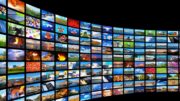According to a recent article at The AV Club, Pixar is putting its 2020 streaming-only films back on the theatrical slate for this year. The article praises this move, saying these films deserve to be seen on the big screen and it’s not like Pixar was able to produce anything last year anyway due to the strikes.
So yes, I will agree in general with those points. But, it brings up the bigger question of whether or not any film truly needs a theatrical release with today’s home theater tech, and whether or not theatrical success is even a good way to gauge the overall success of a film. So, here’s my argument.
The stench of desperation
Since most theaters opened back up in 2021, the entertainment industry has been desperate to convince us all that we need to go back to the movies. They’ve learned the hard lesson that their streaming services aren’t massive moneymakers like they thought. On the other hand, it’s well established that studios keep a large share of the revenue from theatrical releases.
Who remembers this ad?
To me, it always stank of desperation. I don’t blame AMC Theaters for doing something to try to convince people that going to the movies is worth it, but this came off as a sad attempt at mind control from a company that didn’t have a lot of really good reasons to bring you back.
And, that’s largely been the story. Practically every big release of the last two years has advertised that “theater-going is back.” Some, like Top Gun: Maverick have been hailed as the savior of the industry. To me that just sounds ridiculous and desperate.
Big theatrical releases are a bad deal for most of the people who participate.
It starts at the beginning, where companies and partnerships are created for the purpose of losing money. They put a lot into a film as a lesser partner to a big production house and they end up absorbing most of the loss. This can be an intentional move toward a tax break, or it can just be a way to take advantage of honest investors who just want to be part of the magic.
The budgets of theatrical films have bloomed to utterly unreasonable heights thanks to lazy production planning, reshoots, and stratospheric salaries for a few key players. Everyone else really gets squeezed, especially effects houses who often turn out subpar work due to tight budgets and even tighter timeframes.
When a film finally does make it to theaters, the theater operator really gets the shaft. Sure, you’re paying $20 for a ticket and another $15 for snacks. The theater operator keeps most of the money for the snacks, but gives away up to 90% back to the studios, the franchising company, and the company that’s leasing the projection technology to them. Of course, that small pittance needs to pay salaries, rent, and maintenance costs. It’s a lot.
I flat out don’t believe the “myth of the big theater.”
So, I look at it one of two ways, and both ways lead to an argument that just doesn’t hold up.
Let’s presume for a second that films really are better on the big screen.
If a film is really designed to be seen on a big screen, it’s because the filmmakers did it on purpose. They framed the images to look great at large sizes. They orchestrated the sound to work best in those amazing theater sound systems. And if that’s true, they’ve done both themselves and the public a disservice.
The idea of creating movies to be enjoyed on the big screen goes back to the days before television, when there was no other way to see movies. For the first 60 years that people had screens in their homes, the experience wasn’t very good. Screens were small and blurry, and most people couldn’t afford a good sound system.
None of that holds up today. A film will spend a couple of weeks in the theater, and spend decades available on streaming and physical media. Academy voters will watch nominated films on their home TVs, and whenever the film is referenced, it will be in the form of clips or stills which are largely seen on phone screens.
So bottom line, making films to really be better on the big screen is shortsighted and ignores the way these films are actually going to be watched.
Let’s presume for a second that films really look just fine on streaming.
When I watch a film at home, it’s a much better experience. Even if I spend the full amount to get it before it goes to a streaming app, I still save money. The snacks are not only better at home, they’re cheaper. And if my phone lights up or I need a break, I just pause the thing.
I’ve personally invested enough in my home theater setup that I get a great, theater-like result. But even when I’ve watched films on planes I’ve still enjoyed them.
A well-made film should still be a well-made film no matter what size screen you watch it on. Of course it’s going to look better on a larger screen and you’ll see a lot more detail. But a film is more than just a visual spectacle, at least it should be.
In a lot of cases, you’ll get a truer and better connection with the actors when they’re not looming 50 feet over you. Smaller screens encourage more attention paid to the craft of acting and directing, arguably as important as cinematography and special effects.
So bottom line, making films that work well on a smaller screen is focused on the overall viewer experience and can actually work better.
Yes, I actually prefer streaming over the theater experience
I know that this column is generally pretty down on streaming. I think there’s a lot of work that needs to be done to make streaming companies profitable while providing good entertainment and a good value to customers. I’m often pretty disappointed by straight-to-streaming releases, because they’re often poorly crafted.
But compared to the overpriced and difficult movie theater experience, I have to say that streaming is an absolute pleasure. As I’ve pointed out, it’s very hard for theater owners to turn a profit and yet as a whole they’re still not really focused on providing a good customer experience. The way people interact with the films they watch is going to be different for everyone. Some folks shout at the screen, some folks like to feel the electricity of the audience, and others choose to block out everything but what’s being presented in front of them. Yet, all these people are shoved together in a big room.
There’s a lot of work to be done in the next few years in the entire entertainment industry. It’s generally agreed at this point that big-budget superhero films are on their way out. That may open the door to films that are better crafted because they have to rely on smaller budgets. It also may mean that film audiences will have more opportunities to be surprised and delighted, the way they were this past summer with Barbie.
What do you think?
If you agree, leave a comment below! Let’s make this a real conversation?





